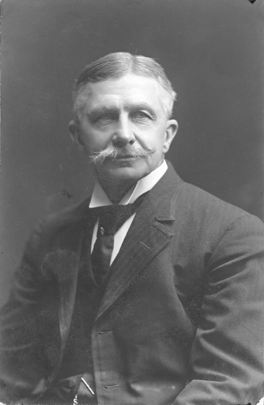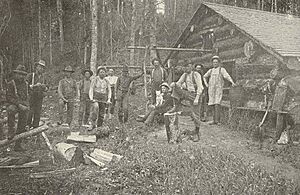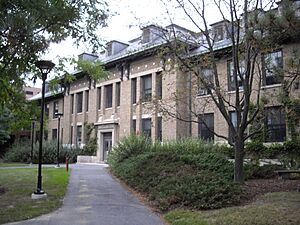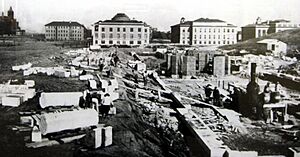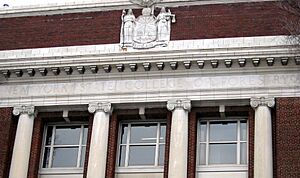History of the New York State College of Forestry facts for kids
The New York State College of Forestry was the first special school in North America for studying forests and trees. It opened in 1898 at Cornell University in Ithaca, New York. Governor Frank S. Black supported its creation. However, after only a few years, in 1903, Governor Benjamin B. Odell stopped its funding. This happened because people were upset about how the college was cutting down trees in the Adirondacks.
Less than ten years later, in 1911, the New York State College of Forestry was started again at Syracuse University. The New York State Legislature decided it should focus on protecting forests. This school has grown and is now part of the State University of New York (SUNY) system. It's still very close to Syracuse University. Today, it's called the State University of New York College of Environmental Science and Forestry, or SUNY-ESF. It's a university where students can earn advanced degrees. Its main campus is in Syracuse, New York, but it also has other locations in New York and Costa Rica. In 2011, the college celebrated its 100th birthday!
Contents
Starting at Cornell University
The New York State College of Forestry was the first professional school in North America dedicated to forestry. It began at Cornell University in Ithaca, NY, in April 1898, thanks to a law passed by the New York State Legislature.
Along with starting the college, the state also bought 30,000 acres (about 121 square kilometers) of forest land in the Adirondack mountains. This land, called the Axton tract, was bought for $165,000. This action was a smart way to deal with the huge amount of trees being cut down at that time, not just in New York but also in other states.
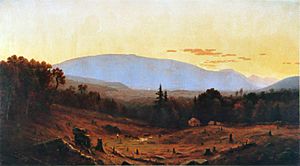
Cornell University had actually been involved with forestry before. Many years earlier, in 1862, the U.S. government passed the Morrill Land Grant Act. This act gave land or money from land sales to states to create colleges. New York State's share went to Cornell. Ezra Cornell, with advice from a wise lumberman, used this money to buy pine lands in Wisconsin. He held onto these lands until the price of lumber went up, which gave the university a lot of money.
Dr. Bernhard Fernow, who was in charge of forestry for the U.S. government, was asked to lead the new college. Fernow visited George Vanderbilt's Biltmore Estate to see how Dr. Carl Schenck was teaching forestry there. Fernow believed that the Cornell school would be different from Schenck's, especially in how much hands-on practice students would get.
Fernow left his government job in July 1898 to come to Ithaca. Classes at the New York College of Forestry began on September 22 or 23, 1898. It was truly the first professional forestry school in North America. By the fall of 1900, the college had 24 students.
One important student was Raphael Zon, who came from Russia. He was part of the very first graduating class in forestry from Cornell in 1901. Zon later became a very important American forester. The Secretary of Agriculture even called him the "dean of all foresters of America."
Stopping the Funding of the College
The new forestry college soon ran into big problems. The main issue was how Bernhard Fernow managed the forest lands given to Cornell by the state for "experiments in forestry." Soon after becoming the Dean, Fernow quickly set up a special forest for demonstrations on the 30,000 acres (about 121 square kilometers) in the Adirondack forests. This area was near Axton, New York.
Fernow's plan was to cut down all the trees in large sections, thousands of acres each year. This was to prepare the land for planting new evergreen trees. However, the college only received $10,000 a year from the state. To make the project work, Cornell made a deal with the Brooklyn Cooperage Company. This company would take the logs and wood from the forest for 15 years. (In the 1890s, most of the valuable spruce trees had already been cut, leaving mostly hardwood trees.) Fernow even had a 6-mile (about 9.7 kilometers) long railroad track built to deliver logs to the company. The company used the hardwood to make barrels and turned other wood into chemicals like methanol and charcoal.
The deal ended up being profitable only for the company. While Fernow did create the first tree nursery in New York State at Axton, Cornell didn't get enough money to replant all the clear-cut areas. Many of the new trees, like Norway spruce, didn't grow well for years, leaving large areas of land bare.
The demonstration forest, near Saranac Lake, made many nearby landowners very angry. Smoke from burning brush and leftover wood, along with Fernow's way of dealing with people, made the public even more upset. People like Ellsworth Petty, an Adirondack guide, protested Fernow's actions. They wrote many letters, which led the State to send a special "Committee of the Adirondacks" to visit the Axton site. The committee decided that "the college has gone beyond what the State intended when the land was given to the university for forestry experiments."
A lawsuit was filed against the Brooklyn Cooperage Company by the People of New York State. Cornell was included in the lawsuit so that its contract with the company could be canceled.
In May 1903, Governor Benjamin B. Odell stopped the funding for the college. He said that "the College of Forestry's work has been heavily criticized, as they have practically stripped the state's forest lands without good results." He felt it was best to stop the funding until a "more scientific and more reasonable method" of managing the lands was found.
When the news arrived that Governor Odell had stopped the funding, Dean Fernow and the students offered to keep the school going. However, Cornell's leaders decided to close the College of Forestry. In June 1903, classes stopped, and the teachers were let go.
Forestry Studies Continue at Cornell
Even after the college closed, forestry continued at Cornell. Dean Liberty Hyde Bailey added a Department of Forestry to the New York State College of Agriculture at Cornell University in 1910–11. Walter Mulford was chosen to lead this new department. In 1911, the New York Legislature gave $100,000 to build a new building for the Forestry Department on the Cornell campus. This building was later named Fernow Hall.
In 1914, a well-known forester named Ralph Hosmer became the head of the Department of Forestry at Cornell. He stayed in that position until he retired in 1942.
Starting Again at Syracuse University
The New York State College of Forestry was started again on July 28, 1911, at Syracuse University. This happened because Governor John Alden Dix signed a special law. Louis Marshall, who had a summer home near Saranac Lake and was a strong supporter of protecting the Adirondack and Catskill Forest Preserves, knew that New York needed a proper forestry college. In 1910, Marshall became a trustee at Syracuse University and told Chancellor James R. Day that he wanted a forestry school there. Marshall then worked to convince Governor Charles E. Hughes to support the idea.
Marshall believed that protecting natural resources, especially forests, was one of the most important duties of the government. He felt that there was a lot of misunderstanding about forest protection and planting new trees. He argued that New York State owned millions of acres of forest land that were in danger and already suffering from too much logging. He said the state had a duty to stop the "wild rage for destruction."
By 1911, Marshall's hard work led to a new law being passed. This law created and funded the State College of Forestry at Syracuse University. Governor Dix signed the bill. Marshall was chosen as the president of the new college's board of trustees and held that job until he passed away in 1929.
The first leader (dean) of the college at Syracuse University, from 1911–12, was Dr. William L. Bray. He was a botanist and plant expert. In 1911, he also helped organize the Agricultural Division at Syracuse University. The first class had 52 students and only two teachers, but tuition was free!
Dr. Hugh P. Baker took over as dean from 1912–20. He had studied forestry at Yale and economics in Germany. Before coming to Syracuse, he worked for the U.S. Forest Service and taught forestry at Pennsylvania State College.
In 1913, money for building Bray Hall, the first campus building, was still held up by the state government. Louis Marshall, as president of the college's board, wanted action. So, two years after the funding bill was first signed, Marshall went to the new Governor William Sulzer. It's said that Governor Sulzer wanted to delay signing the $250,000 funding, but Marshall handed him a pen and told him to "Sign it." The Governor did.
By 1913, the college had 160 students from 46 counties in New York State. It had eight trained teachers, all graduates of good forestry schools. Dean Baker said that they were getting applications from students in 25 states and 6 foreign countries. The college started offering graduate courses in 1918. Female students were allowed as early as 1915, but the first woman graduated from ESF in 1940.
Dr. Cornelius B. Murphy, Jr., a later president of ESF, said in 2001 that "Louis Marshall is largely the reason that everyone from the college is here today." He called Marshall "our father, our first leader and our first forester."
As Dean, Nelson Courtlandt Brown helped the college receive a gift of the Charles Lathrop Pack Demonstration Forest. Soon after, they also got a 15,000-acre (about 60.7 square kilometers) Archer Milton Huntington and Anna Hyatt Huntington Wildlife Forest. Brown also helped get state money for Marshall Hall, which provided more space for teaching and labs. He also secured more state funding for teacher salaries and a $10,000 grant for forest research.
Samuel N. Spring became dean of the New York State College of Forestry in Syracuse in February 1933, taking over from Baker. Spring served as Dean until he retired in May 1944.
Becoming Part of SUNY
In 1948, the State University of New York (SUNY) system was created. The State College of Forestry became a special college within this new SUNY system. Its name was changed to State University College of Forestry at Syracuse University. In 1972, as more people became interested in protecting the environment, the college's name was changed again to the State University of New York College of Environmental Science and Forestry (SUNY-ESF).
Today, the college still has a close connection with Syracuse University, but it runs on its own. ESF students can take classes and even earn degrees from Syracuse University. They can also take classes at Cornell's state-funded colleges and at the SUNY Upstate Medical University.
Growth After the War
By 1960, the college had grown a lot. It became the largest forestry school in the country, with more than 700 students.
Bringing Back the American Chestnut
One of the most important projects at SUNY ESF is trying to bring back the American chestnut tree. The United States Forest Service had once said the American chestnut was basically gone. But scientists Charles Maynard and William Powell at SUNY ESF are using special techniques like plant tissue culture and genetic engineering to create a new type of chestnut called the Darling 58.
However, as of December 2023, the new Darling 58 chestnut trees are facing some challenges in their outdoor tests.
Timeline
- 1898 - New York State College of Forestry is approved by the state to be at Cornell University in Ithaca.
- 1900 - The college has 24 students.
- 1903 - The New York State College of Forestry at Cornell University loses its funding.
- 1911 - The New York State College of Forestry is approved again; first classes start at Syracuse University.
- 1912 - The SUNY-ESF Ranger School is started at Cranberry Lake in the Adirondacks, managed by the college.
- 1917 - First classes are held in the new Bray Hall, the first building at the college in Syracuse.
- 1930 - Money for a second building on the Syracuse campus is approved by Governor Franklin D. Roosevelt.
- 1933 - Louis Marshall Memorial Hall is officially opened.
- 1948 - The New York State College of Forestry at Syracuse University becomes part of the new State University of New York system.
- 1972 - The college's name changes to the State University of New York College of Environmental Science and Forestry (SUNY-ESF).
- 2011 - SUNY-ESF celebrates its 100th anniversary.
- 2012 - The SUNY-ESF Ranger School celebrates its 100th anniversary.
See also
- List of heads of the New York State College of Forestry
- History of Cornell University
- SUNY-ESF Ranger School
- History of Papermaking in New York
- List of historic schools of forestry


